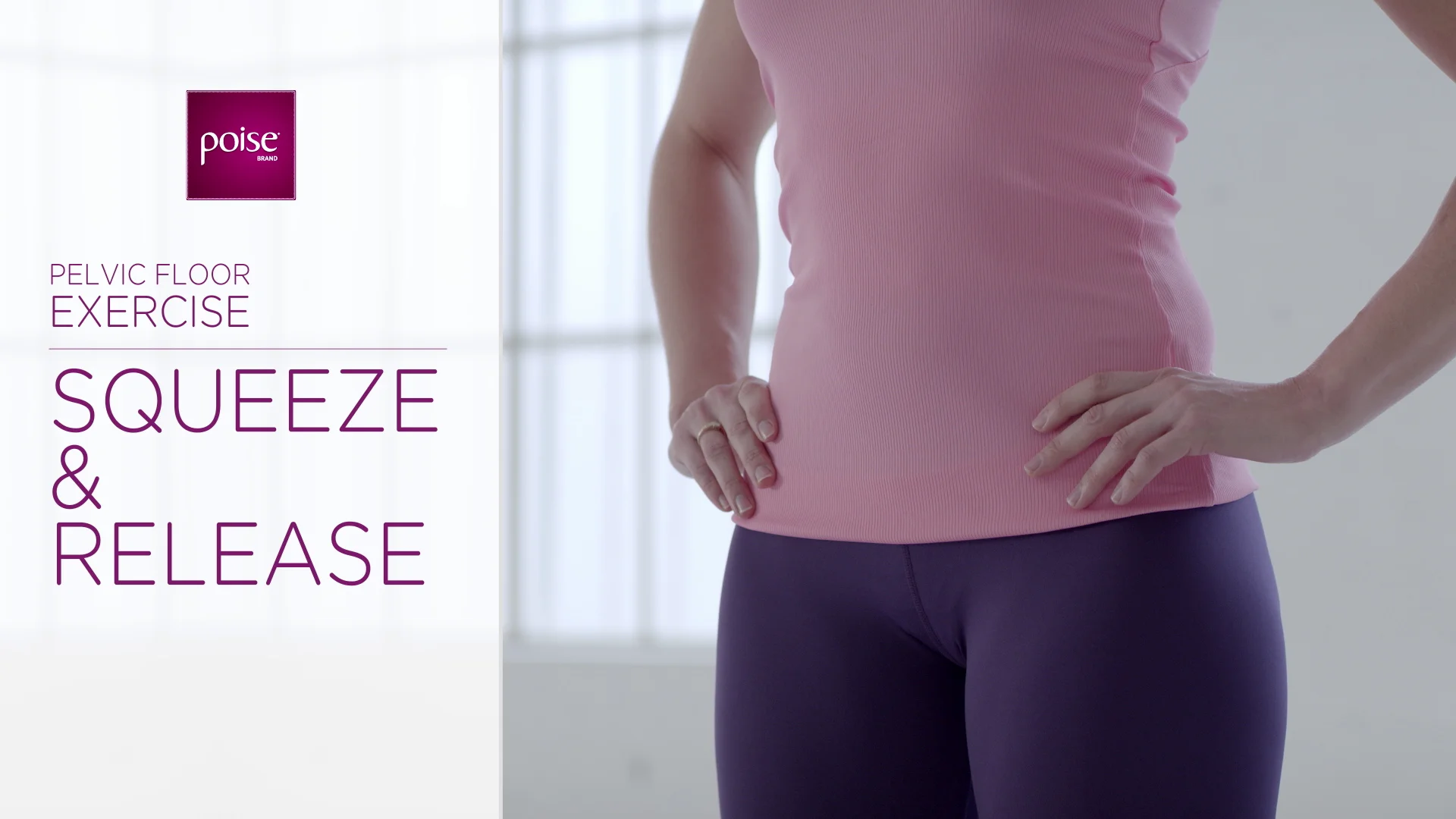The question of whether squats are good or bad for your pelvic floor is one that often sparks debate. As a fitness enthusiast, I’ve always been told that squats are a fundamental exercise for building lower body strength. However, I also became aware of the importance of pelvic floor health after experiencing some personal discomfort related to weakened pelvic muscles. This led me down a path of research and exploration, seeking to understand how squats could impact this critical part of my body.

Image: www1.poise.com.au
It’s easy to feel overwhelmed with conflicting information about exercises and their potential effects on our pelvic floor. Some experts advocate for squats, emphasizing their benefits for core strength and overall fitness. Others express caution, warning of potential risks for individuals with pre-existing pelvic floor issues. This article aims to shed light on this complex topic, delving into the intricacies of squats and their impact on pelvic floor health. We’ll explore the mechanics of both the exercise and the pelvic floor, analyzing how these two systems interact and what factors contribute to positive or negative outcomes.
Understanding the Pelvic Floor and Its Role
The pelvic floor is a group of muscles that form a sling-like structure at the base of the pelvis. These muscles play a crucial role in supporting internal organs, like the bladder, uterus, and rectum, as well as maintaining continence and contributing to sexual function. Think of the pelvic floor as the foundation of your core, providing stability and control.
A healthy pelvic floor is characterized by strong, flexible muscles that can contract and relax appropriately. Weakness in these muscles can lead to various issues, including urinary incontinence, difficulty controlling bowel movements, and discomfort during sex. These issues affect people of all ages and genders, often arising from childbirth, menopause, age-related muscle weakening, or underlying medical conditions.
Squats and Pelvic Floor Engagement
The impact of squats on the pelvic floor depends on several factors, including proper form, individual muscle strength, and pre-existing conditions. When performed correctly, squats can strengthen the pelvic floor muscles, contributing to better control and support. This occurs through the activation of the core muscles, including the pelvic floor, during the exercise.
Benefits of Squats for Pelvic Floor Health:
- Improved Muscle Strength: Squats engage the pelvic floor muscles, promoting their strengthening and overall tone.
- Enhanced Endurance: Repeated squatting motions enhance the endurance of pelvic floor muscles, enabling them to better support internal organs.
- Increased Blood Flow: The increased blood flow to the pelvic region, a byproduct of squatting, can improve circulation and contribute to overall pelvic floor health.

Image: www.strengthresurgence.com
Potential Risks of Squats for a Weakened Pelvic Floor:
- Increased Strain: Performing squats with improper form or excessive weight can strain the pelvic floor, potentially exacerbating existing weakness or leading to new issues.
- Increased Pressure on Organs: Improper execution can lead to excessive pressure on the bladder, uterus, and rectum, potentially triggering incontinence or other complications.
- Aggravation of Existing Conditions: Individuals with pre-existing pelvic floor conditions, like prolapse or incontinence, may find squats to be aggravating.
Navigating the Squats Dilemma
The key to incorporating squats safely into your routine lies in understanding your body and adjusting the exercise accordingly. If you have any concerns about your pelvic floor health, consulting a pelvic floor physical therapist is always advisable.
Here are some essential tips for approaching squats with a focus on pelvic floor safety:
- Focus on Proper Form: Prioritize correct technique over heavy weights. Engage your core, including your pelvic floor muscles, throughout the movement. Ensure your knees don’t go past your toes and your back maintains a neutral position.
- Start Gradually: Begin with bodyweight squats and gradually increase the weight as your muscles get stronger. Listen to your body and avoid pushing yourself too hard too quickly.
- Seek Professional Guidance: It is always best to have a qualified fitness professional assess your form and provide personalized guidance to minimize risk and maximize benefits.
- Be Mindful of Your Body: If you experience any discomfort, pain, or leaking during or after squats, stop immediately and consult a healthcare professional.
Remember that your pelvic floor is a crucial component of your overall health and well-being. While squats can contribute to a strong, healthy pelvic floor, it’s essential to approach them with caution and personalized attention to individual needs. Listening to your body and seeking professional guidance when needed are crucial steps in navigating this complex fitness equation.
FAQ: Squats and the Pelvic Floor
Q: Is it safe to do squats if I’ve had a baby?
A: While squats are generally considered safe after childbirth, it’s essential to listen to your body. It’s best to start slowly and gradually progress as your pelvic floor recovers. Consult with your doctor or a pelvic floor physical therapist for guidance.
Q: Can squats help with urinary incontinence?
A: Yes, strengthening the pelvic floor muscles through squats can be beneficial for managing urinary incontinence. However, it’s crucial to work with a pelvic floor physical therapist for a personalized approach.
Q: Is it possible to strengthen my pelvic floor without doing squats?
A: Absolutely! Many exercises, like Kegel exercises and pelvic floor muscle training, effectively strengthen the pelvic floor. A physical therapist can guide you on appropriate exercises for your specific needs.
Q: What are some alternatives to squats that target the pelvic floor?
A: Alternatives include bridges, hip thrusts, and core stability exercises like planks and bird dogs. These exercises engage the core muscles without placing excessive pressure on the pelvic floor.
Are Squats Good Or Bad For Pelvic Floor
Conclusion
The answer to the question of whether squats are good or bad for your pelvic floor is a nuanced one. While squats can offer benefits for pelvic floor strength, it’s crucial to prioritize proper form, start gradually, and listen to your body. Remember, individual needs and experiences vary, so seeking guidance from a healthcare professional is always a wise choice. Whether you’re a fitness enthusiast or someone concerned about their pelvic floor health, understanding the nuances of this exercise can empower you to make informed decisions about your physical well-being.
Are you interested in learning more about the impact of other exercises or activities on your pelvic floor? Share your thoughts and questions in the comments below!



/GettyImages-173599369-58ad68f83df78c345b829dfc.jpg?w=740&resize=740,414&ssl=1)


